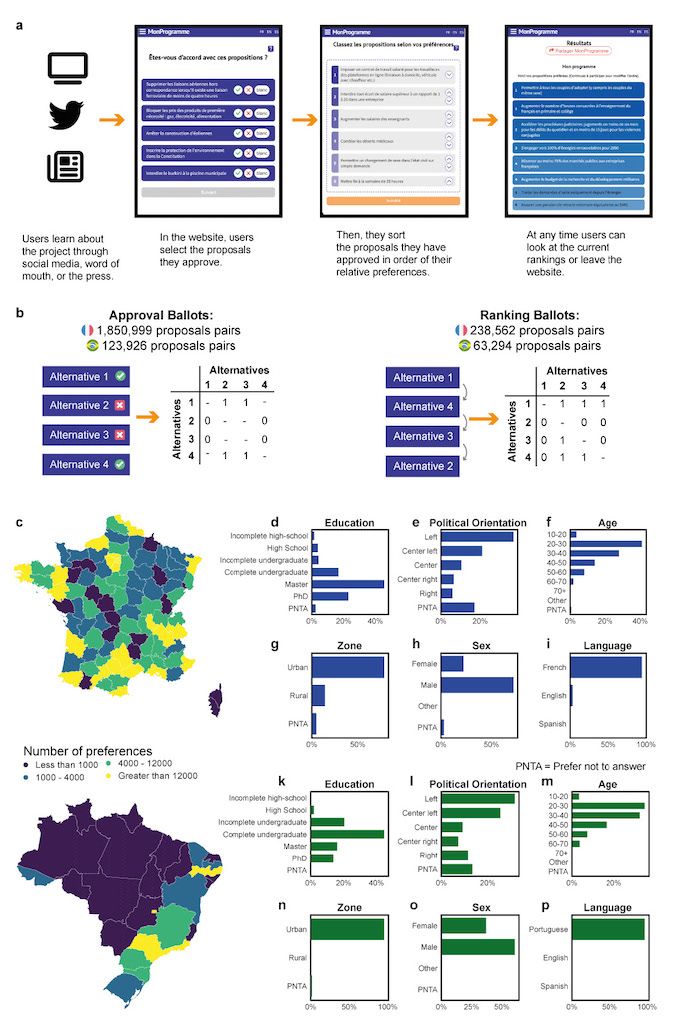Understanding the political divide with techniques inspired by social choice theory

If we observe that our societies are getting more and more polarised, can we identify easily which are the topics that divide them?
Umberto Grandi, from the AI Department – LILaC Team, and his co-authors were able to do this during the 2022 presidential elections in France and Brazil, using techniques inspired by social choice theory!
This study resulted in an article published in the journal Nature Human Behaviour in october 2023.
An overview of the article:
Digital technologies can augment civic participation by facilitating the expression of detailed political preferences. Yet, digital participation efforts often rely on methods optimized for elections involving a few candidates. Here we present data collected in an online experiment where participants built personalized government programs by combining policies proposed by the candidates of the 2022 French and Brazilian presidential elections. We use this data to explore aggregates complementing those used in social choice theory, finding that a metric of divisiveness, which is uncorrelated with traditional aggregation functions, can identify polarizing proposals. These metrics provide a score for the divisiveness of each proposal that can be estimated in the absence of data on the demographic characteristics of participants and that explains the issues that divide a population. These findings suggest divisiveness metrics can be useful complements to traditional aggregation functions in direct forms of digital participation.
Référence de l’article
Carlos Navarrete, Mariana Macedo, Rachael Colley, Jingling Zhang, Nicole Ferrada, Maria Eduarda Mello, Rodrigo Lira, Carmelo Bastos-Filho, Umberto Grandi, Jérôme Lang, César Hidalgo
Understanding political divisiveness using online participation data from the 2022 French and Brazilian presidential elections
Nature Human Behaviour, 2023, pp.1- 84. ⟨10.1038/s41562-023-01755-x⟩